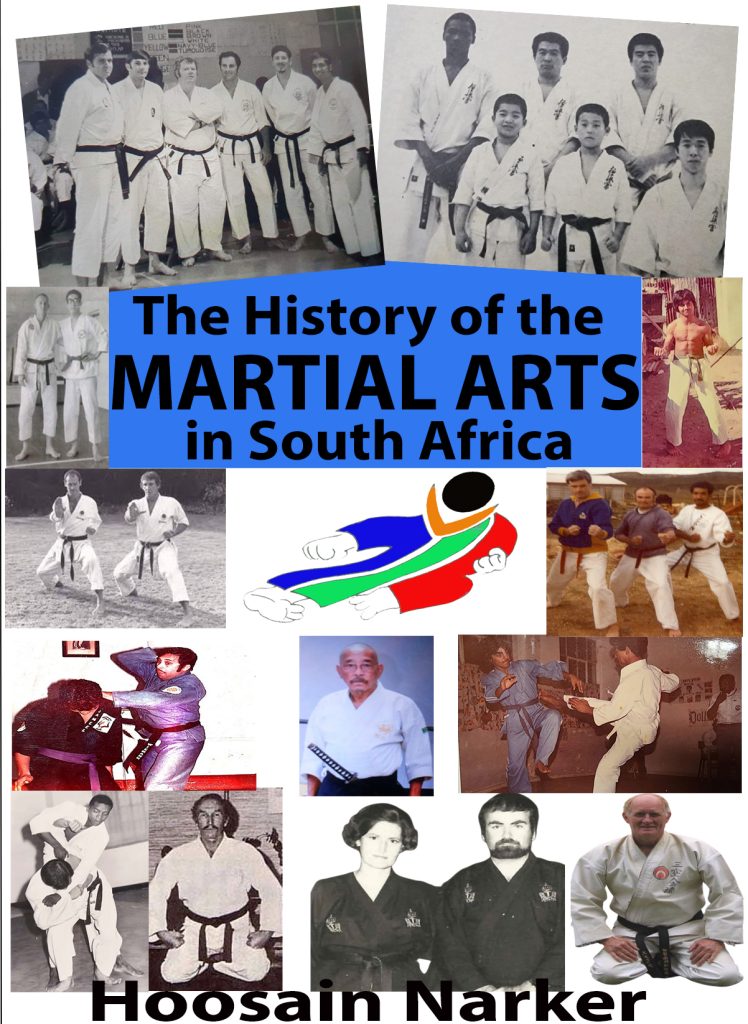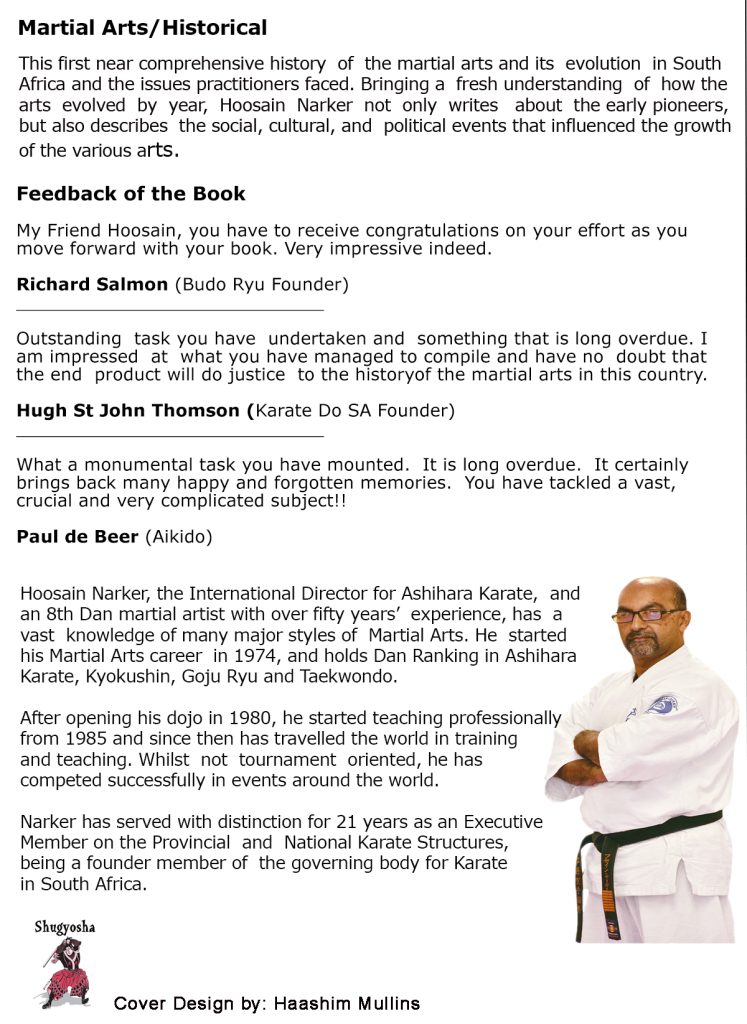This is a new work on the History of the Martial Arts in South Africa. Currently at over 400 pages there is still lots to be done – research, chatting to of the old timer pioneers still with us and many others. Scheduled for release early in 2025.
Once the Sabaki Book is published, this work will get full attention.

A Brief history of the Martial Arts in South Africa
Probably the first form of martial arts to arrive on South Africa’s shores came with the first arrival of Malay slaves in 1662. This was the Malay and Indonesian form of Silat. The Keris, the Malay dagger was often used on the streets of Cape Town against the Dutch oppressors.
As some of the Khoisan people were jealous about the Malay people’s culture and religion, there was a lot of hand to hand combat between the Malays “Pangs” – the Panglima Malay warriors and the Khoisan to the death.
Due to the clamping down by the Dutch authorities of the time, the fighting part of the art started winding down as later only of the “dancing” rituals ended up being practised in the “Khalifa” displays at religious gatherings.
Indian Kalaripayattu was brought to Cape Town in 1901 by Hazrath Soofie Saheb, as well as some of the South Indian indentured labourers and passenger Indians seeking new beginnings, but was never widely practised. So was the practise of the “Lahti” – the Indian forms of stick fighting. Eventually the practise would die out.
Boxing and wrestling were well known in South Africa before much was known about the Orient. Boxing was known as the manly art of self-defence and was practised bare fisted by a few hardy individuals who performed this bloody sport before groups of men betting on the outcome.
It is important to realise or to appreciate the fact that prior to dawn of democracy in 1993, karate, judo and most sports was controlled by a minority sympathetic to the Apartheid regime. South Africa’s sporting history, with its adherence to the abhorrent Apartheid was certainly not rosy and despite what many say today that they opposed Apartheid, or were supportive of Nelson Mandela or that they were card carrying members of the ANC, we must realise how that policy affected the many disadvantaged, causing many to quit or those that continued, simply could not reach their full potential due to the barriers imposed then. Some of these stories will appear in this work, stories which are not talked about much, but stories that must never be forgotten.
Here, in South Africa, racism has left its undeniable mark on our state, our DNA and our souls. Prejudice thrived in systems that were historically designed to keep non-white people in an inferior social standing. Keeping non- white institutions of learning, where sporting success can lead to lifetime success, in the similarly derelict state they were in during the segregation days, was a powerful way of killing the progress of non-white people. It was in this era that the martial arts had their roots.
While many martial arts have ancient origins, they have evolved to fit the demands of the modern world. Whilst karate was introduced well after jiu jitsu and judo, these martial arts and some others from Asia are not as popular as karate, but learning techniques used in them and other styles practiced by different cultures can help practitioners to evolve into well-rounded martial artists.

 D5 Creation | Powered by: WordPress
D5 Creation | Powered by: WordPress